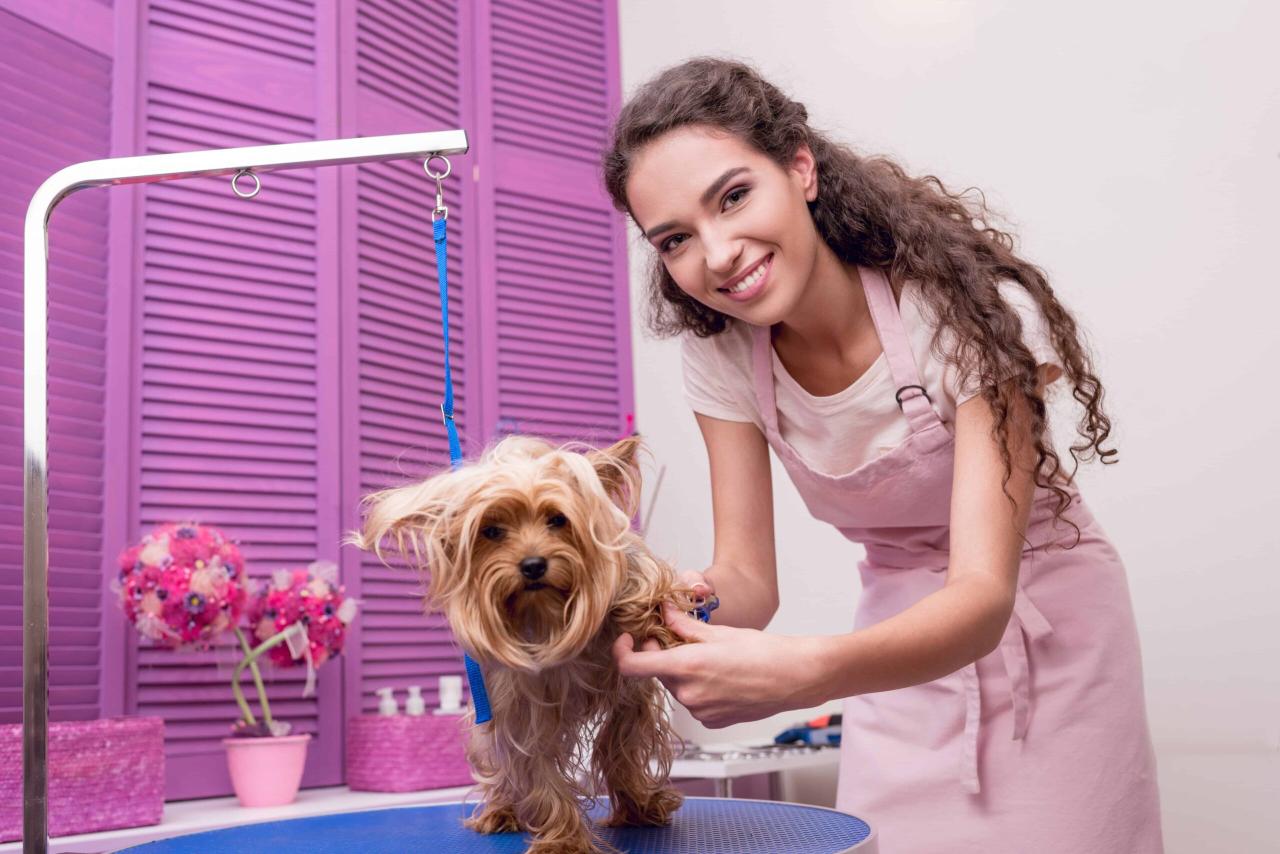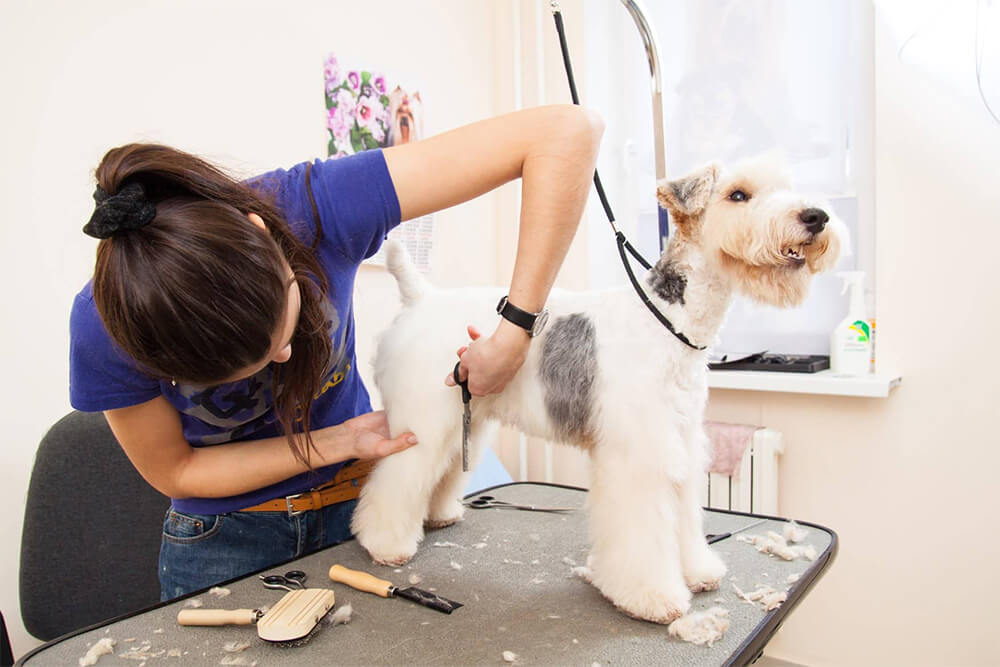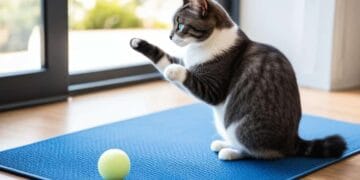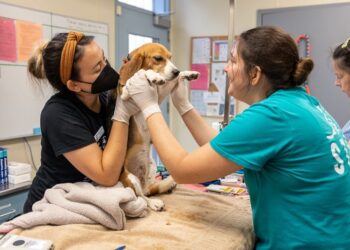Grooming your beloved dog or cat is an invaluable part of responsible pet ownership, extending far beyond simply keeping them looking tidy; it is a critical health routine that directly impacts their skin, coat, joints, and emotional well-being.
Many pet owners view grooming as an optional luxury or a challenging battle, often unaware that a simple, consistent schedule can prevent painful, expensive issues like severe matting, chronic skin infections, and orthopedic problems caused by overgrown nails.
Establishing a positive grooming routine from an early age, built on patience and copious positive reinforcement, transforms a potentially stressful event into a comfortable, predictable bonding ritual.
This comprehensive guide will empower you to tackle the entire grooming process—from the critical pre-bath brush-out to the final, necessary ear clean—providing step-by-step, breed-specific tips and professional techniques that ensure every session is safe, effective, and stress-free for both you and your furry companion.
The Philosophy of Fear-Free Grooming
The biggest obstacle in home grooming is fear, which can be overcome by prioritizing your pet’s emotional comfort above speed or perfection.
A. Create Positive Associations
- A. Introduce all grooming tools—brushes, clippers, dryers—slowly and calmly, pairing each item with a high-value treat or praise.
- B. Allow your pet to sniff and investigate the tools while they are turned off, immediately rewarding their curiosity.
- C. Use a soothing, gentle voice throughout the entire session to keep your pet relaxed and reassured.
- D. Never force your pet to tolerate a procedure they are clearly fearful of, as this only deepens their negative association.
- E. If your pet shows extreme signs of stress, stop the session immediately and try again later after a quiet break.
B. Mastering the Short Session
- A. Consistency is far more important than duration, especially when first starting a routine or introducing a new tool.
- B. Start with sessions lasting only three to five minutes, stopping while your pet is still cooperative and before they become restless.
- C. Gradually increase the time over weeks or months as your pet’s confidence and tolerance grow.
- D. Always end every grooming session, even if you only managed to trim one nail, on a highly positive note with a reward.
C. The Essential Pre-Bath Ritual
- A. Never bathe a matted or tangled pet, as water tightens the knots instantly, making them impossible to remove and causing severe pain.
- B. The pre-bath brush-out is the most critical step, removing all dead hair, loose debris, and any knots.
- C. This step also allows you to check for any hidden lumps, bumps, parasites, or skin irritations that need immediate attention.
- D. For long-haired and double-coated breeds, this phase alone can take significantly longer than the actual washing.
Coat-Specific Brushing and De-Shedding
Selecting the correct brush for your pet’s coat texture is vital; using the wrong tool can damage the fur and scratch the skin.
A. Coping with Long and Silky Coats
- A. Breeds like Yorkshire Terriers, Maltese, and long-haired cats require daily brushing to prevent matting.
- B. Use a Pin Brush to gently work through the long coat, lifting and separating the hair strands.
- C. Follow up with a Slicker Brush to remove smaller tangles, working systematically in small sections.
- D. Always use a Wide-Tooth Metal Comb after brushing to ensure the comb glides smoothly from the skin to the tip of the hair, confirming there are no hidden mats.
- E. Use a conditioning or detangling spray during the process to reduce friction and minimize hair breakage.
B. Conquering the Double Coat
- A. Breeds like Huskies, German Shepherds, and Golden Retrievers have a dense undercoat that sheds heavily twice a year.
- B. Undercoat Rakes with long, sturdy teeth are essential to reach beneath the thick topcoat and pull out the massive amounts of dead undercoat.
- C. De-Shedding Blades (like the FURminator) are highly effective tools but must be used gently and sparingly to avoid scratching the skin or excessively damaging the guard hairs.
- D. Never shave a double-coated dog in the summer, as their undercoat provides crucial insulation against the heat and protects against sunburn.
- E. Focus on thorough line brushing, parting the coat down to the skin and working in small sections to ensure every part of the dense undercoat is removed.
C. Caring for Short and Smooth Coats
- A. Short-haired dogs like Labradors, Boxers, and Pugs require weekly or bi-weekly grooming sessions.
- B. Use a Rubber Curry Brush or a Grooming Mitt/Glove in a gentle circular motion to lift surface dirt, dander, and loose hair.
- C. This type of brushing stimulates oil production, giving the coat a natural, healthy shine.
- D. Short coats often benefit from using a slightly dampened chamois or cloth for a final polish after brushing.
The Bathing and Drying Process
Bathing is necessary to remove accumulated dirt and oil, but the drying phase is paramount for preventing skin issues.
A. Setting Up the Bathing Station
- A. Place a Non-Slip Mat in the tub or shower basin to prevent slips and help your pet feel secure while standing.
- B. Gather all supplies—shampoo, conditioner, washcloth, cotton balls (for ears)—before introducing your pet to the water.
- C. Use lukewarm water that is comfortable to the touch; extreme temperatures cause immediate stress and discomfort.
- D. Anchor your pet loosely with a Tub Restraint or grooming loop to prevent them from jumping out, but never leave them unattended.
B. Washing Techniques
- A. Start by soaking the body from the neck down, avoiding the sensitive eye and ear areas.
- B. Place cotton balls loosely in the ear canals before wetting to prevent water from entering the L-shaped canal, which is a major cause of ear infections.
- C. Apply a pet-specific shampoo—never human products—and work it into a rich lather, ensuring it reaches the skin.
- D. Rinse meticulously, using a handheld sprayer or a cup to ensure every trace of shampoo residue is removed, as residue can cause skin irritation and itchiness.
C. The Drying Imperative
- A. Thorough drying is not optional; moisture left near the skin is the primary cause of painful hot spots and fungal infections.
- B. Start with a vigorous towel dry, gently squeezing water from long fur.
- C. Use a High-Velocity Dryer or a human hairdryer set to the cool or low-heat setting, constantly moving the nozzle to avoid concentrating heat on one area.
- D. While drying, continuously brush the coat (line brushing for double coats) to separate the hair and ensure air reaches the skin layer completely.
- E. For pets who fear the dryer noise, introduce the tool slowly over several days using counter-conditioning (turn on the dryer, give a treat, turn off the dryer).
Finishing Touches and Safety Procedures

The final steps involve precision care on the most sensitive areas: eyes, ears, and nails, where safety gear is critical.
A. Nail Trimming Protocol
- A. Use sharp Scissor-Style Clippers or an Electric Grinder designed for pet nails.
- B. Styptic Powder (or cornstarch/flour) must be kept within immediate reach to stop bleeding if the quick is nicked.
- C. Desensitize the paw gently, rewarding your pet for allowing their toes to be touched, handled, and then clipped one by one.
- D. For dark nails, trim in tiny increments until you see the final dark spot at the center of the nail, indicating the end of the quick.
- E. Dewclaws must be trimmed regularly since they do not wear down naturally and can grow into the paw pad.
B. Ear and Eye Hygiene
- A. After bathing and removing the cotton balls, check the ears for residual moisture, cleaning the outer ear canal with a vet-approved drying solution on a cotton ball.
- B. Never insert anything deep into the ear canal, only wipe the visible surface.
- C. Wipe away tear stains and crust around the eyes daily using a soft cloth or specialized Pet Eye Wipes.
- D. Use round-tipped safety scissors with extreme care to trim long hair around the eyes that may rub against the cornea and cause irritation.
C. Mat Removal and Emergency Safety
- A. Never use scissors to cut mats that are tight against the skin, as it is extremely easy to accidentally slice the pet’s thin skin hidden beneath the felted fur.
- B. Use a de-matting tool or clippers (holding the mat up away from the skin) to shave the mat off or break it up safely.
- C. Always have a comfortable, well-fitting Muzzle ready for nervous or pain-aggressive pets to ensure your own safety during handling.
- D. If you encounter severe matting that causes the skin to be red or irritated, stop immediately and seek professional help from a veterinarian or professional groomer.
Conclusion
Grooming is a necessary, foundational component of a lifetime commitment to your pet’s physical well-being, demanding consistent effort and the correct knowledge.
The successful home groom relies entirely on implementing a fear-free philosophy, always prioritizing the pet’s emotional safety and comfort above the speed of the task.
Mastery of the routine begins with the critical pre-bath brush-out, where using the right tool—be it a slicker for long coats or a rake for double coats—is essential for preventing painful matting.
The bathing and drying phase must be meticulous, with special attention paid to thorough drying using high-velocity air to safeguard the pet’s sensitive skin from bacterial hot spots caused by lingering moisture.
Precision care on extremities, such as gentle ear cleaning and consistent, positive nail trimming, prevents chronic infections and long-term orthopedic issues.
The dedication to using appropriate, high-quality, and safety-conscious tools transforms this chore into a predictable, low-stress, and positive bonding ritual.
By adhering to these professional tips, owners significantly reduce the need for emergency vet visits related to preventable skin and coat conditions.
Ultimately, a well-groomed pet is a healthy pet, reflecting the owner’s devotion to ensuring their comfort and confidence in their world.








